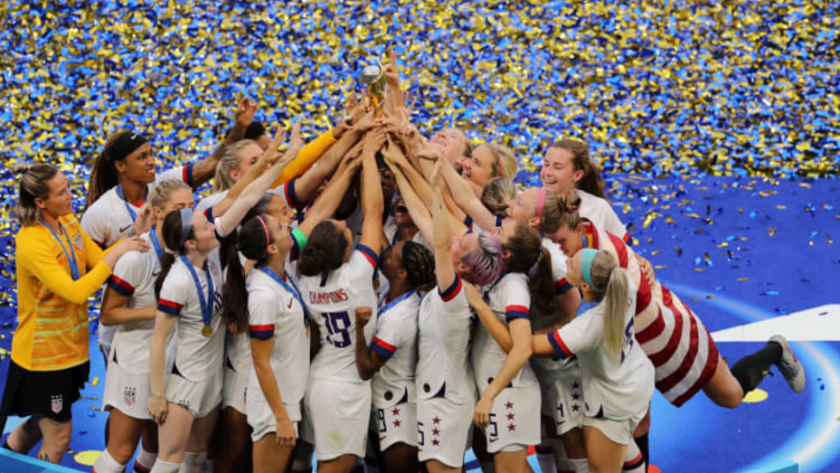Should there be more teams competing in the Women’s World Cup Soccer competition? This is question that has been discussed and the answer is growth.
The Question of Expansion
When the first Women’s World Cup began in 1991, only twelve teams participated, mostly due to the fact that there just wasn’t much support for the women’s game and many countries could either not afford to send a team or weren’t interested. But by 2019, the competition had expanded to include 24 teams from North America, South America, Europe, Africa, Asia, and Australia.
However, shortly after the World Cup ended in 2019, FIFA, short for the Fédération Internationale de Football Association, announced that in the 2023 Women’s World Cup, 32 teams would be competing. This was met with mixed reviews, so let’s take a look at how this decision could impact the women’s game positively and negatively.
Yes: A Step Toward Equality
One of the biggest things about the 2019 Women’s World Cup were the stories of the fight for equality. Ada Hegerberg, who had recently become the first female winner of the Ballon d’Or and is considered by many to be the best player in the world, refused to play with her national team of Norway in a protest for women’s equality and for the betterment of the circumstances surrounding women’s soccer.
The men’s World Cup has been playing with 32 teams since 1998, and if the number of teams that are allowed to compete in the women’s tournament is bumped up to 32, it would be another step toward the equality female players have been fighting for. Having more teams involved in the Women’s World Cup would also bring in a larger range of fans, who are excited that their country has the opportunity to play in the competition, an opportunity they may not have had had it not been for the expansion.
With these new fans, as well as more stadiums, more revenue can come in, providing the opportunity for equal pay, something women all over the world have been fighting for.
Yes: Development of the Women’s Game
Perhaps the biggest argument for the expansion of the Women’s World Cup is that with more teams participating, countries will be forced to develop their women’s soccer teams. Potential stars in third-world countries or other countries that haven’t yet entered the world of soccer will have the opportunity to play in the biggest tournament for women’s soccer in history. Or, countries that have been developing their women’s soccer teams but missed out on the 2019 World Cup will have the chance to qualify in 2023, such as Switzerland, Mexico, Ireland, and Panama, drawing attention to their country, their players, and their skills.
As the Women’s World Cup continues to take place every four years and women’s soccer continues to grow and develop across the globe, different countries will start to invest in the sport and get their teams to the Cup, providing an even more competitive atmosphere than is already had. However, this most likely won’t happen in less than four years. The expansion to 32 teams may be a good move on FIFA’s part, but 2023 may not be the year to do it. If given enough time, countries across the world may begin to see how developing their women’s soccer team is a good decision, and come 2027, the 32 team expansion may be more effective for women’s soccer.
No: Remember Thailand?
The U.S. Women’s National Team turned heads for many reasons during the 2019 World Cup, including Alex Morgan’s controversial tea-sipping celebration, Megan Rapinoe’s purple hair, and of course the championship of the entire tournament. However, the USWNT also made headlines for their 13-0 rout of Thailand’s women’s soccer team. Many said that the U.S. had been unsportsmanlike and should have stopped scoring around 7, while others disagreed and said they shouldn’t have held back when it came to scoring, but their celebrations were over the top, and still, others thought the score and the celebrations were fine.
Perhaps the biggest argument against the expansion to the 32 teams wouldn’t make the atmosphere more competitive at all, and would actually make it less competitive if more teams like Thailand were let into the Cup. Many people argue that the extra eight teams won’t be ready for a tournament of the same caliber as the Women’s World Cup, and the expansion would simply result in more double-digit scorelines and that letting more teams that aren’t that great compete in the tournament would take away from the prestige and meaning of the championship.
No: There May Not be Enough Interest… or Prize Money
For a long time, men’s soccer had a much higher level of interest than women’s soccer did, and that was why the World Cup for men started sixty-one years before the women ever competed in the tournament. Although women’s soccer and the interest was taken in it has grown immensely, especially over the last decade, there are still many people who aren’t interested in the women’s game, and some would argue that there isn’t enough interest in women’s soccer yet to expand the Women’s World Cup to include the same number of teams as the men’s World Cup.
Another popular argument against 32 teams is again dealing with money and equal pay. While some say that putting more teams into the competition will increase revenue and pay, others are convinced that even if the prize money is increased because the number of teams competing was also increased, so the amount of money given to each team will remain the same.
A lot of people think that allowing 32 teams to participate isn’t the best decision because not enough people will be interested, or because FIFA won’t give out enough prize money to make a significant difference between the money awarded with 24 teams and the money awarded with 32 teams.
2023 will be the first year the Women’s World Cup will have 32 teams competing, but the questions of whether or not it will be successful, and if the participation of 32 teams will continue to 2027 and beyond, still linger.
https://youtu.be/LwFtiA9Heu4
This post may contain affiliate links. Meaning a commission is given should you decide to make a purchase through these links, at no cost to you. All products shown are researched and tested to give an accurate review for you.




